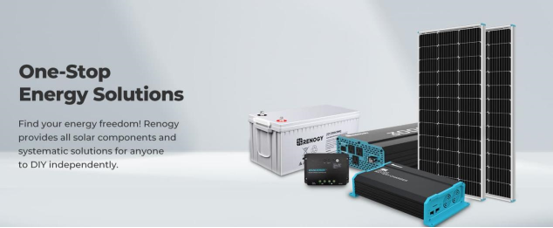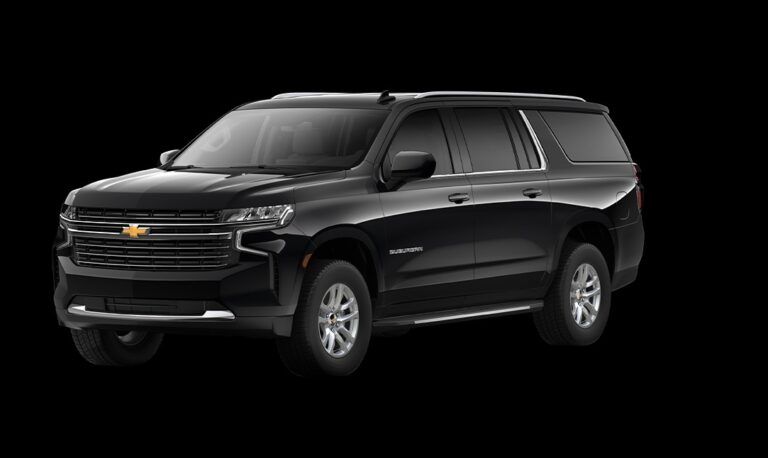RV Solar Panels: A Guide For Beginners

In the realm of modern camping, where mobility meets sustainability, RV solar panels emerge as essential companions for outdoor enthusiasts. These specialized panels harness the sun’s energy to power everything from lights to refrigerators, enabling off-grid adventures with minimal environmental impact. Understanding their types, benefits, and how to integrate them into your camping setup is crucial for maximizing both convenience and eco-friendliness. Whether you’re new to solar power or a seasoned camper looking to upgrade, this guide explores everything you need to know about choosing and using RV solar panels effectively, ensuring your next outdoor excursion is powered by the sun.
What Are Solar Panels for Campers?
RV solar panels are specialized solar panels designed to be installed on recreational vehicles (RVs) to harness solar energy and convert it into electricity. These solar panels for campers provide a sustainable and eco-friendly way to power various appliances and devices during camping trips. With the growing interest in off-grid living and the increasing popularity of camping, more people are turning to solar panels for camping as a reliable power source.
Unlike traditional power sources, RV solar panels offer the freedom to travel and camp anywhere without worrying about finding an electrical hookup. They harness energy from the sun, making them a clean and renewable source of power. By investing in RV solar panels, campers can reduce their reliance on fossil fuels, lower their environmental impact, and save money on fuel and campsite fees over time.
Types of Solar Panels for Camping
When considering camping solar panels, it’s essential to understand the different types available. Here are the most common types of solar panels for camping:
1. Monocrystalline Solar Panels
Monocrystalline solar panels are made from a single continuous crystal structure. They are known for their high efficiency and durability, making them an excellent choice for camping solar panels. Their efficiency rates can reach up to 20%, which means they can produce more power in less space compared to other types.
Monocrystalline panels are also known for their long lifespan, often exceeding 25 years. Although they tend to be more expensive than other types, their superior performance and compact size make them a popular choice among RV owners.
2. Polycrystalline Solar Panels
Polycrystalline solar panels are made from multiple crystal structures. They are generally less efficient than monocrystalline panels but are more affordable. These solar panels for camping are suitable for those on a budget who still want a reliable source of solar energy.
Polycrystalline panels typically have an efficiency rate of around 15-17%. They are slightly larger and heavier than monocrystalline panels, requiring more space for the same power output. However, their lower cost makes them an attractive option for many campers.
3. Flexible Solar Panels
Flexible solar panels are lightweight and can be easily installed on curved surfaces. These are ideal for campers with limited roof space or irregular surfaces. They are also more portable, making them a great option for those who need portable solar panels for camping.
Flexible panels are made from thin, bendable materials, allowing them to conform to the shape of your RV’s roof. They are also more resistant to impact and can be walked on without causing damage. However, they are generally less efficient than rigid panels, with efficiency rates around 10-15%.
4. Portable Solar Panels
Portable solar panels for camping are designed to be easily transported and set up wherever you need them. These panels typically come with foldable designs and carrying cases, making them perfect for short camping trips or as a backup power source.
Portable panels can be placed in the optimal position to capture sunlight, even if your RV is parked in the shade. They are available in various sizes and power outputs, allowing you to choose a system that fits your energy needs. The main advantage of portable panels is their versatility and ease of use.
Is An RV Solar System Right for You?
Deciding whether an RV solar system is right for you depends on several factors. If you enjoy off-grid camping and want to reduce your reliance on traditional power sources, investing in solar panels for campers could be a great decision. Here are some considerations:
- Camping Frequency: If you camp frequently, the investment in camping solar panels can pay off over time by reducing your need for fuel or paid electricity hookups. Frequent campers will see a quicker return on investment and greater benefits from the initial cost of the solar system.
- Energy Consumption: Understanding your energy needs is crucial. If you use a lot of electricity for appliances, lights, and devices, an RV solar system can provide the necessary power. Conversely, if your energy consumption is low, a smaller and less expensive system may suffice.
- Environmental Impact: Using solar panels for camping reduces your carbon footprint and reliance on fossil fuels, contributing to a more sustainable lifestyle. If environmental sustainability is important to you, switching to solar energy is a positive step.
Other considerations include your budget, the amount of space available on your RV for solar panels, and your willingness to maintain and monitor the system. While the initial cost of solar panels can be high, the long-term savings and environmental benefits often outweigh the upfront investment.
Top Solar Panels for Campers
For campers seeking reliable solar solutions, Renogy offers exceptional choices, including their renowned 100W Monocrystalline Solar Panel. Known for its efficiency and durability, this panel is ideal for compact RV setups. For those needing more power in a portable format, the Renogy 400W Lightweight Portable Solar Suitcase stands out. Featuring foldable panels and an easy-to-carry design, it provides substantial energy generation while remaining convenient for transportation and setup at campsites. Renogy’s commitment to quality and innovation makes these options perfect for campers looking to embrace solar energy without compromising on performance or portability.

How Do RV Solar Panels Work?
RV solar panels work by converting sunlight into electricity using photovoltaic cells. Here’s a step-by-step process:
- Sunlight Hits the Panels: Solar panels capture sunlight through photovoltaic cells. These cells are made of semiconductor materials, typically silicon, which generate an electric current when exposed to sunlight.
- Energy Conversion: The sunlight is converted into direct current (DC) electricity. The amount of electricity produced depends on the intensity of the sunlight and the efficiency of the solar panels.
- Charge Controller: The DC electricity flows through a charge controller, which regulates the voltage to protect the batteries. The charge controller ensures that the batteries are charged at the correct rate and prevents overcharging, which can damage the batteries.
- Battery Storage: The regulated DC electricity is stored in deep-cycle batteries for later use. Deep-cycle batteries are designed to be discharged and recharged repeatedly, making them suitable for solar power systems.
- Power Inverter: When you need to use the stored energy, the power inverter converts the DC electricity into alternating current (AC) electricity, which can power your RV’s appliances and devices. Most household appliances and electronics run on AC power, so the inverter is a crucial component of the system.
By understanding how RV solar panels work, you can better appreciate the benefits of solar energy and make informed decisions about your camping solar panel setup.
How Many Solar Panels Does Your RV Need?
The number of solar panels your RV needs depends on your energy consumption. Here are some steps to determine the right number:
- Calculate Your Daily Energy Use: List all the appliances and devices you use, and note their wattage and usage hours. Common RV appliances include lights, refrigerators, water pumps, fans, and electronic devices like laptops and smartphones.
- Total Energy Consumption: Multiply the wattage by the hours of use to get the total watt-hours per day. For example, if you use a 60-watt light bulb for 5 hours a day, the energy consumption would be 60 watts x 5 hours = 300 watt-hours per day.
- Solar Panel Output: Determine the average daily sunlight hours in your location and the output of your chosen solar panels. For instance, if you receive 5 hours of sunlight per day and your solar panel produces 100 watts, the daily output would be 100 watts x 5 hours = 500 watt-hours.
- Number of Panels: Divide your total daily energy consumption by the daily output of one solar panel to determine how many panels you need. For example, if your total daily energy consumption is 1500 watt-hours and each panel produces 500 watt-hours, you would need 1500 / 500 = 3 panels.
By accurately calculating your energy needs and the output of your solar panels, you can ensure that your RV solar system is sized correctly to provide reliable power during your camping trips.
Figure Out How Much Energy You Consume
Understanding your energy consumption is key to designing an effective solar system for your RV. Here’s how you can figure it out:
- Make a List: Write down all the appliances and devices you use in your RV. This should include everything from lights and kitchen appliances to entertainment devices and charging stations.
- Note the Wattage: Check the wattage of each item, usually found on a label or in the user manual. If the wattage is not listed, you can calculate it by multiplying the voltage (V) by the current (A). For example, a device that uses 120V and 1.5A would have a wattage of 180W.
- Estimate Usage Time: Estimate how many hours per day each item will be used. Be realistic about your usage patterns, taking into account activities like cooking, lighting, and entertainment.
- Calculate Total Consumption: Multiply the wattage by the usage time for each item to find the total watt-hours per day. Sum up the watt-hours for all items to get your total daily energy consumption.
By following these steps, you can ensure that your RV solar system is tailored to meet your energy needs, providing a reliable and sustainable power source for all your camping adventures.
Example Calculation
Suppose you have the following appliances and usage times:
- LED Lights: 10W, used for 5 hours = 10W x 5h = 50 watt-hours
- Refrigerator: 80W, runs 24 hours = 80W x 24h = 1920 watt-hours
- Laptop: 60W, used for 3 hours = 60W x 3h = 180 watt-hours
- Water Pump: 50W, used for 1 hour = 50W x 1h = 50 watt-hours
Total daily energy consumption: 50 + 1920 + 180 + 50 = 2200 watt-hours
If your solar panels produce 500 watt-hours per day each, you would need 2200 / 500 = 4.4 panels. Rounding up, you would require 5 solar panels to meet your daily energy needs.
Conclusion
Solar panels for campers offer a versatile and eco-friendly solution for powering your RV during camping trips. Whether you choose monocrystalline, polycrystalline, flexible, or portable solar panels, understanding your energy needs and selecting the right type of solar panel is crucial for a successful off-grid experience. With careful planning and the right equipment, you can enjoy the freedom and sustainability of solar-powered camping.


